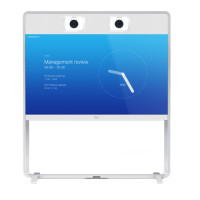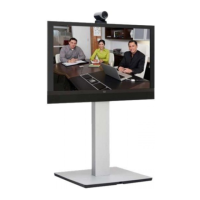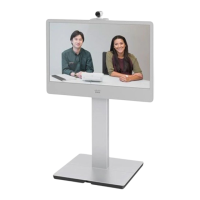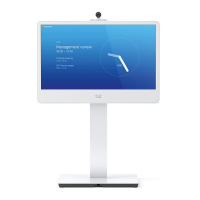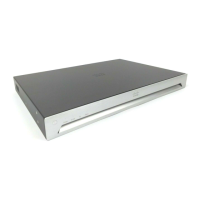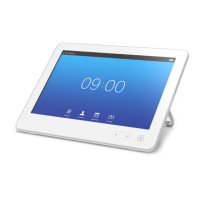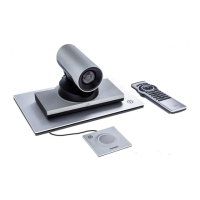D15335.02 Cisco TelePresence MX700 and MX800 API Reference Guide CE8.0, FEBRUARY 2016.
Copyright © 2016 Cisco Systems, Inc. All rights reserved. 28
Cisco TelePresence MX700 and MX800
API Reference Guide
Feedback from codec over HTTP
To get notifications from the codec, you need to register HTTP
feedback expressions. The codec then uses HTTP POST to
send feedback messages to the URL supplied in ServerUrl.
This means that you have to have a HTTP server running for
your application to receive updates from the codec.
Registering for feedback
The command for registering is
xCommand HttpFeedback Register
. The syntax for this
command and its arguments are described in this section.
HttpFeedback Register syntax:
xCommand HttpFeedback Register
FeedbackSlot: <1..4>
ServerUrl(r): <S: 1, 2048>
Expression: <S: 1, 255>
Expression: <S: 1, 255>
Expression: <S: 1, 255>
Expression: <S: 1, 255>
Expression: <S: 1, 255>
Expression: <S: 1, 255>
Expression: <S: 1, 255>
Expression: <S: 1, 255>
Expression: <S: 1, 255>
Expression: <S: 1, 255>
Expression: <S: 1, 255>
Expression: <S: 1, 255>
Expression: <S: 1, 255>
Expression: <S: 1, 255>
Expression: <S: 1, 255>
HttpFeedback Register arguments:
FeedbackSlot: The codec can register up to 4 slots of servers
requesting HTTP feedback. Set the registering to one of them.
Note: Avoid using FeedbackSlot 3 in an environment where
Cisco TelePresence Management Suite (TMS) is used as TMS
uses this feedbackslot to register its expressions.
ServerUrl: The URL that you want the codec to post the HTTP
feedback messages to.
Expression 1-15: Register the expressions you want to
receive feedback on. See the ”Feedback mechanism” on
page 26 section for more information about the expression
formats.
Example: Registering feedback on configuration changes,
disconnect events and call status changes.
<Command>
<HttpFeedback>
<Register command=”True”>
<FeedbackSlot>1</FeedbackSlot>
<S er ve r Url> http://127.0.0.1/
myhttppostscripturl</ServerUrl>
<Expression item=”1”>/Configuration</
Expression>
<Expression item=”2”>/Event/
CallDisconnect</Expression>
<Expression item=”3”>/Status/Call</
Expression>
</Register>
</HttpFeedback>
</Command>
Feedback output
When the codec notifies the registered HTTP server about
changes, the body contains the same XML as when polling.
There is however one small difference. The root-node
contains an Identification node with children that specify the
codec from which the notification originated. This means that
you can handle multiple codecs with a single HTTP server URI.
Example: Audio volume changed.
<Configuration xmlns=”http://www.company.com/XML/
CUIL/2.0”>
<Identification>
<SystemName>integrator</SystemName>
<M ACAddress>00:00:de:ad:be:ef</M ACAdd ress>
<IPAd d ress>192.168.1.100</IPA d d r ess>
<ProductType>Cisco Codec</ProductType>
<ProductID>Cisco Codec C90</ProductID>
<S W Ve r sion>TC6.0.0.199465</SW Versio n>
<HW Bo a rd >101401-5 [08]</H W Boa r d>
<SerialNum ber>PH0000000</SerialNumber>
</Identification>
<Audio item=”1”>
<Volume item=”1”>60</Volume>
</Audio>
</Configuration>

